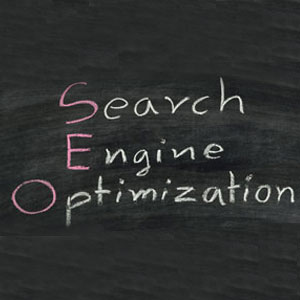THANK YOU FOR SUBSCRIBING
Big Data's Impact in Manufacturing
There is no doubt about the big buzz around Big Data in just about every industry these days, and manufacturing is no different.

By
Apac CIOOutlook | Thursday, September 21, 2017
Stay ahead of the industry with exclusive feature stories on the top companies, expert insights and the latest news delivered straight to your inbox. Subscribe today.
There is no doubt about the big buzz around Big Data in just about every industry these days, and manufacturing is no different. There are hundreds of articles that define the concept, each with its own spin on a definition that revolves around the Three V’s: Volume, Velocity and Variety.
This is not one of those articles. Instead my focus is on how Big Data is transforming how we view the manufacturing discipline, and how an organization can harness its data assets to realize the benefits in a more agile way.
A Long History with Data
Since the early days of industrial manufacturing, efficiency has been king. That culture of continuous improvement has always been centered on data with an unwavering focus on productivity. From early pioneers like our own Shojiro Ishibashi and Harvey Firestone to today’s top innovators in the field, there is a shared quest for new insight. Whether stored in reams of paper with hand crank calculators, rooms of mainframe punch cards or today’s in-memory monsters, the key ingredient to finding treasure has always been a company's own data.
Take a walk on a plant floor and it’s evident that data is everywhere. In the past, our visibility was limited to analysis at the component level. We’ve used that data to great ends in optimizing machine hours, minimizing or even eliminating scrap, streamlining processes, and maximizing labor utilization, to name a few. However, those improvements pale in comparison to the opportunities presented when we see, interpret and understand data in the next dimension of granularity.
One of the biggest challenges is recognizing where those dimensions are and acquiring them. Commonly referred to as “dark data,” these are the unrecognized assets of your organization. They’re there; you just aren’t seeing them yet! This data is spread across disparate systems. It represents extended attributes that have never been joined because they have always served different functions or business units. It is data that you don’t realize is being captured, as well as data that exists that isn’t being captured at all.
Don’t panic-you’re not alone. There’s a reason why "Big Data" is your software sales representatives' new favorite phrase. This evolution is just getting started, the opportunities are exponential, and very often we need help getting there.
Data Generation at an Exponential Pace
Although data has been a consistent source of manufacturing innovations and improvements, the Volume, Variety and Velocity (there are those Three V’s again) of today are a relatively new phenomenon. We are only 100 years removed from the revolutionary automobile assembly line and less than 40 years from the rise of Computer Integrated Manufacturing.
This is not one of those articles. Instead my focus is on how Big Data is transforming how we view the manufacturing discipline, and how an organization can harness its data assets to realize the benefits in a more agile way.
A Long History with Data
Since the early days of industrial manufacturing, efficiency has been king. That culture of continuous improvement has always been centered on data with an unwavering focus on productivity. From early pioneers like our own Shojiro Ishibashi and Harvey Firestone to today’s top innovators in the field, there is a shared quest for new insight. Whether stored in reams of paper with hand crank calculators, rooms of mainframe punch cards or today’s in-memory monsters, the key ingredient to finding treasure has always been a company's own data.
Take a walk on a plant floor and it’s evident that data is everywhere. In the past, our visibility was limited to analysis at the component level. We’ve used that data to great ends in optimizing machine hours, minimizing or even eliminating scrap, streamlining processes, and maximizing labor utilization, to name a few. However, those improvements pale in comparison to the opportunities presented when we see, interpret and understand data in the next dimension of granularity.
One of the biggest challenges is recognizing where those dimensions are and acquiring them. Commonly referred to as “dark data,” these are the unrecognized assets of your organization. They’re there; you just aren’t seeing them yet! This data is spread across disparate systems. It represents extended attributes that have never been joined because they have always served different functions or business units. It is data that you don’t realize is being captured, as well as data that exists that isn’t being captured at all.
Don’t panic-you’re not alone. There’s a reason why "Big Data" is your software sales representatives' new favorite phrase. This evolution is just getting started, the opportunities are exponential, and very often we need help getting there.
Data Generation at an Exponential Pace
Although data has been a consistent source of manufacturing innovations and improvements, the Volume, Variety and Velocity (there are those Three V’s again) of today are a relatively new phenomenon. We are only 100 years removed from the revolutionary automobile assembly line and less than 40 years from the rise of Computer Integrated Manufacturing.
With Both Big Data And Analytics, You Have To Build Credibility And Confidence With Your Business Stakeholders By Proving Their Value
Recall the statement from visionary Bill Gates, who claimed “640K ought to be enough for anybody”? That was in 1981. Now we carry 50K times that in our pockets every day.
The rapidly changing landscape coming in manufacturing features advanced automation, 3D printing, artificial intelligence, the Internet of Things and nano-technologies. These advances in manufacturing will grow like “The Great Wave off Kanagawa” into majestic and frightening requirements for IT systems and solutions. Still, there are actions we can take to fortify and prepare our environments for this future. Some are best practices regardless of the demands of Big Data, including consolidating systems that perform similar functions, eliminating redundant instances, and infrastructure rationalization. Important foundational elements include a strong Data Governance practice that includes clear data ownership, governance and controls, as well as a Data Warehousing Strategy that defines what data will be centralized and has clear methods for consolidation, acquisition and distribution. You are then ready to consider data consumption which must account for both the tools and skills of your customers in the business. Every piece of software seems to have an “analytics” suite or add-on, yet your traditional reporting software partner tout their own. The question will likely come down to “Build vs. Buy."
Build vs. Buy
The truth is—there is no right answer. Reporting software companies are moving quickly into the analytics space to offer capabilities that can be applied across systems and value chains, while leading players in analytics suites continue to offer more specialized packages. There is a relatively quick ROI and value proposition in using a bolt-on or niche analytics package for supply chain or pricing, but my suggestion is to evaluate long-term costs to the enterprise and leverage packages where there is either a greater deal of complexity or a competitive differentiator for the business.
Last but certainly not least: Who is prepared and able to use these shiny new tools? There is a distinct difference in the skills required for an analyst role versus an analytics role. Can analysts be good at analytics? Absolutely at the same time, though, it’s critical to evaluate whether they are prepared to be successful. Analytics requires complex statistical data modeling, creating and proving scientific theories, specialty in understanding data, and a technical skill set in the package of choice. These are skills that can be built within your organization, but like the analytics toolsets, you must make a conscious decision on “Build vs. Buy” for your skill sets, as well.
What It All Could Mean
These investments are beneficial to the entire enterprise, but even more so in manufacturing. Imagine the competitive advantage you could create by closing the feedback loop with complete traceability from the product consumer to a specific batch, then feeding that data to your product development and quality teams. A future possibility might someday be end-to-end virtual product development and testing to enhance rapid innovation for your organization. Imagine the ability to analyze intra-machine level diagnostics across multiple plants to proactively manage energy, preventative maintenance, compliance and even demand fulfillment. And speaking of demand, in our world of instant gratification even the make-to-stock business is becoming a pull-based supply chain. Think about the enhanced supply forecasting capabilities driven by demand signals built on individual customer behaviors in the digital, social and commercial environments.
So what’s holding you back? Unfortunately, Big Data and analytics inherited three clear character traits from their predecessor: Business Intelligence. First, success is not guaranteed. These are no silver bullet answers. Second, the path is never straight. Prepare to iterate and innovate along the way, which means the outcome is somewhat unpredictable. Third, value is hard to prove until the task is complete. What is the monetary value of knowing something you don’t know? It's only once you gain new insight that you can fully quantify the return on the investment to seek that answer.
With both Big Data and analytics, you have to build credibility and confidence with your business stakeholders by proving their value. Find real opportunities that resonate. Take those opportunities for quick-win, high-payoff results that allow you to fail quickly and market the victories. Then, as you gain momentum, make sure to keep your foot on the gas.





